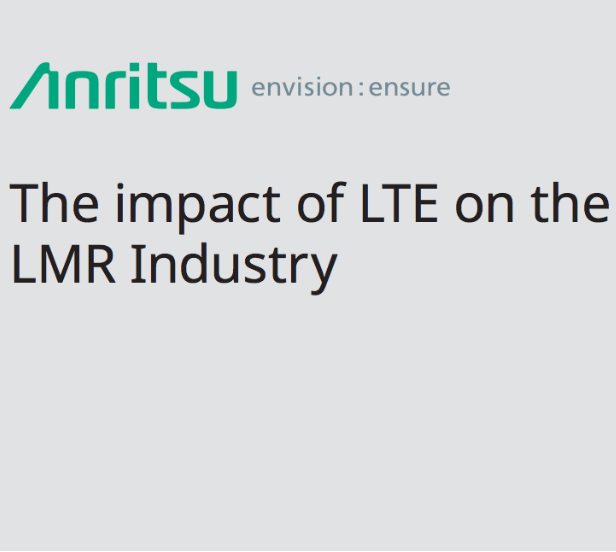Scroll down to view white paper
One of the hottest topics in the Land Mobile Radio (LMR) industry today is the use of private Long Term Evolution (LTE). Although there is a plethora of information available regarding LTE and how it will affect the LMR industry, many questions remain unanswered. One of the most common questions that is being asked is: “Does the emergence of LTE mark the beginning of the end for traditional LMR Standards such as P25 and TETRA?” While, this is a difficult question to answer, most experts do not believe this to be the case. However, many believe that a profound transformation is going to happen, and everyone in the LMR community needs to understand what these changes may be.
This paper will delve into the LTE/LMR discussion and will present some facts so that readers can determine for themselves what impact LTE will have on them. Every segment of the LMR industry will be affected in some way, but exactly how much LTE will affect an individual or organization will depend on what that individual’s or organization’s roles are. For instance, frontline users; such as the firefighters and police officers on the streets will probably not care about LTE all that much. All they are concerned with is that whatever equipment they are given works reliably every time. It doesn’t matter if the underlying technology is LTE, P25, TETRA, or analog. They just need a communications system that will be there when their safety is on the line.
LTE is well established in the consumer market, but enhancements to the standard to specifically address the needs of Public Safety/Critical Communications are required. The 3rd Generation Partnership Project (3GPP) is in charge of the LTE standards and has been working hard over the past several years to incorporate the necessary changes to the LTE standards to address the needs of the Public Safety community.
The driving factor for adopting LTE in the LMR industry is the increased need for broadband data applications. For instance, many police departments are outfitting their officers with video cameras both for their safety and to document encounters in case there are questions or lawsuits that arise from an incident. Most of these devices can only record the events and cannot stream the video in real time. There is a strong desire for real time situational awareness, and an LTE enabled recording device can relay the live video stream back to a command center where commanders can maintain real time tactical situational awareness.
All of the leading LMR equipment manufacturers such as Motorola, Harris, Tait, Kenwood, Hytera, etc. have already embraced LTE. Many of these manufacturers have either already released or is about to release combined LTE/LMR solutions. With the rise in hybrid LTE/LMR devices, operators and maintainers will require test equipment to test both LTE and LMR equipment.
[pdf-embedder url=”https://www.rcrwireless.com/wp-content/uploads/2017/05/625248d8-7051-4eb0-a8e4-2dd0d7a8131c_Anritsu_The_impact_of_LTE_on_the_LMR_Industry_Whitepaper.pdf” title=”{625248d8-7051-4eb0-a8e4-2dd0d7a8131c}_Anritsu_The_impact_of_LTE_on_the_LMR_Industry_Whitepaper”]

